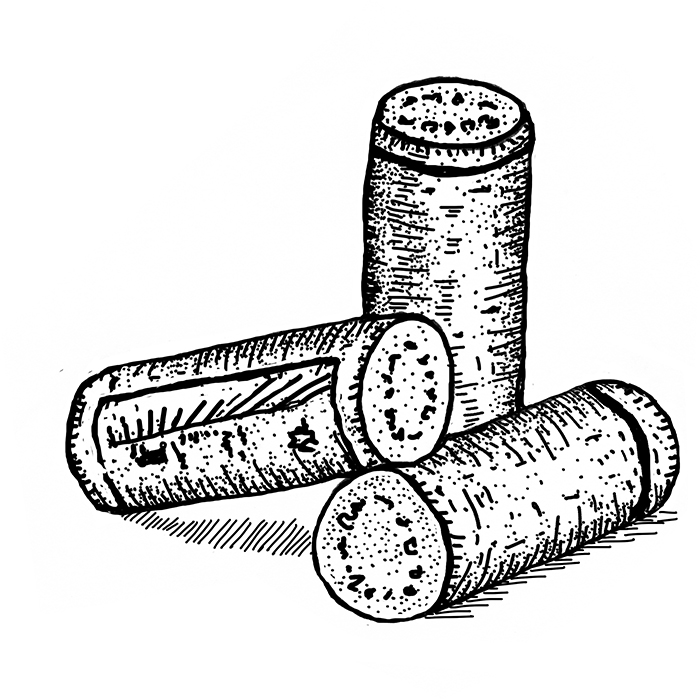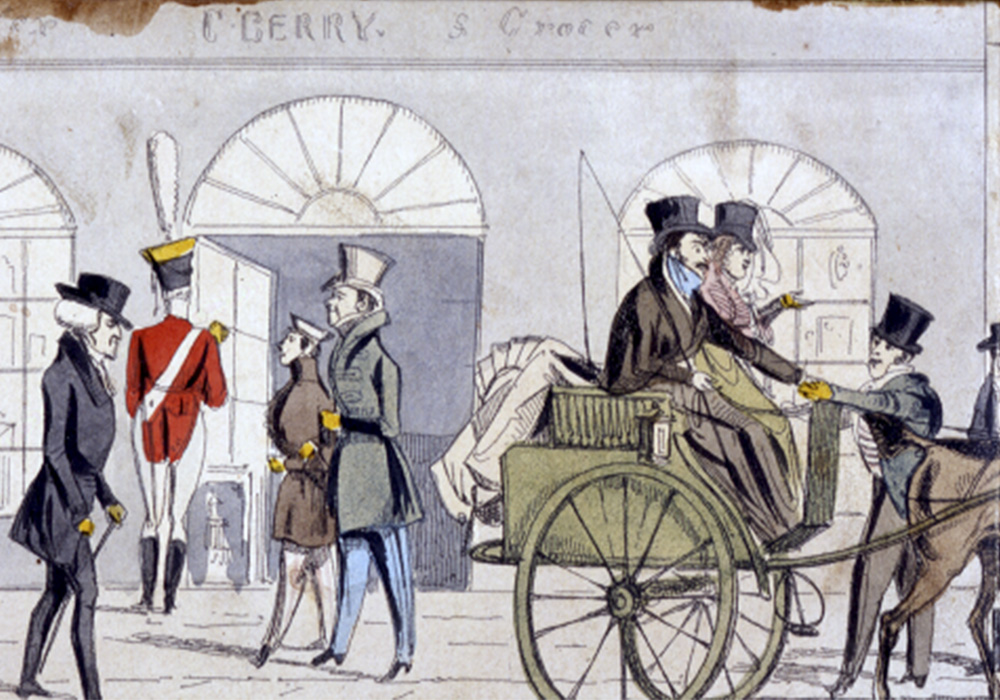The Grocer of St James’s Street | Part 2
Author: Berry Bros. & Rudd

This article is the second part of The Grocer of St James’s Street, originally published in Number Three magazine in Spring 1958. Delving into the St James’s of the 17th century, this article continues the story of William Pickering – the man who laid the foundations for Berry Bros. & Rudd as it is today.
From Painter Stainer to Wine Merchant
It is likely that William had long been attracted to the Grocery and Wine Trade. One of his more distant ancestors Jon Pickering, who died in 1448, had been a Merchant Venturer, and in Tudor days the upper classes were closely associated with commerce and trade – the younger sons of gentlemen often being bound apprentice in London. During the early 18th century, the Grocer’s wares of coffee, tea, tobacco and spices still possessed that aura of romance and swashbuckling adventure on the high seas that their barter had entailed in an earlier age.
Whatever the nostalgic reasons might have been for William’s readiness to take up grocering, the practical incentive is obvious. Possessed of a lively mind and a keen business sense, he must have realised that, commercially, the profession of Painter Stainer was on the decline. It had enjoyed a brief vogue during the pageantry that attended the Restoration of Charles II, but the colour of the Stuart regime had faded to the sober orange of the Dutch succession, and the Heraldic Artist depended mainly on the whim of the aristocrat for his dwindling custom.
St James’s Street was rapidly becoming a fashionable quarter; its nearness to the Palace and the Court of Queen Anne made it a convenient haunt for the aristocracy, and when William set up his new studio at No.3, his position was ideal not only for pursuing his old calling of Painter Stainer, but also for his new one of Grocer and Wine Merchant.
Eager to learn and to make his way in the world, it did not take long for William to become familiar with the business of Italian Warehousing; in this he was undoubtedly helped by his wife, whose ability and acumen he always respected. The Coffee Mill grew and flourished under its new management. On 7th May 1707, William Pickering became a Freeman Painter Stainer; on 2nd November 1715, his son William was bound to him as an apprentice Painter Stainer, and a younger son, John, on 5th November 1718 – both as mere boys.
William and Elizabeth had two other children, Thomas Bourne and Elizabeth. Thomas went to Cambridge University and later took Holy Orders while her father advanced Elizabeth £500 on her marriage to Mr Hames Horne. It was because of William and John, however, and his determination that they should go into partnership together after his death, that William Pickering Senior conceived his Grand Plan – a plan that was to affect the structure of No.3 St James’s Street as it stands today.
St James’s Street in development
This plan was to gain control of the whole of Stroud’s Court, including the houses on St James’s Street and those off the street behind. For this purpose, he entered into a Building Agreement with the ground landlord Sir Thomas Hanmer.
Sir Thomas was Speaker in the House of Commons from 1713 to 1715 – providing yet another of the many links between No.3 and Parliament. By this agreement, concluded on 26th April, 1731, Pickering undertook to build “four messuages, tenements or dwelling-houses… on the piece or parcel of ground aforesaid which forms part of a certain field or close of land formerly called Pall Mall field alias St James’s Field… now known by the name of Stroud Court”.
Pickering agreed to pull down all the buildings standing on the site and to “build and completely finish in good workmanlike style two uniform messuages to contain the whole front or breadth of the said piece of ground” facing on St James’s Street, “leaving a convenient passage on the ground floor to pass and repass to and from the Backhouses.” The “two messuages” compose the No.3 of today.
It was further agreed that William should build and “completely finish upon the east end or back part of the said piece of ground two or more houses, messuages or tenements.” In fact, he built four such houses, which are known today as No.s 2 to 4 Pickering Place. Sir Thomas Hanmer, for his part, was to grant a lease of the whole piece of ground and any building standing on it for a term of 61 years from Midsummer Day, 1733, at a yearly rent of £60. Pickering’s tenants were forbidden to carry on such trades as “pipe maker or burner, farrier, wash stiller, melting tallow chandler, slaughterer, sugar baker or refiner, or soap boiler.” We must be grateful for this provision, for such trades would certainly be uncomfortable neighbours today.
The Rate Book for 1731 is missing, but the Rate Book for the following year indicates that William Pickering, in his usual go-ahead way, had lost no time after the Agreement was signed in carrying out his plan. By 1732, the houses in Stroud’s Court were being pulled down, and demolitions in the street had started with the Coffee Mill. It can be imagined that William kept a keen eye on the building operations and made sure that neither shoddy workmanship nor materials went into the erection of his new kingdom. It is all the more tragic, therefore, that he did not live to see it completed, although the major part of the operations must have been finished when he died on 16th September 1734, at the age of 59.
The Pickering Legacy
It was not until 1741 that the Rate Book officially described his monument – the Court that stands behind No.3 – as Pickering’s Court. The passage leading to it now ran between the site of No.3 and No.4, showing that the two houses straddling the old alleyway had been joined to extend the ground floor area of the Coffee Mill, while William and John, the partners, presumably occupied the upper section, divided into two dwelling houses. This is borne out by the fact that the younger Pickerings paid separate rates in 1738.

Over the years, William Pickering had accumulated a fortune and died a rich and successful man. His Obituary in The Gentleman’s Magazine described him as “The Grocer of St James’s Street” and credited him with a fortune of £15,000 and £800 a year. It is not altogether surprising that this man – who came up to London with “his pockets to let” – should prosper so well and become one of the richest and most respected residents of St James’s Street, because he was born of a resourceful and adventurous family.
His father’s second cousin was William Pickering, Knight, “a brave, wise comely English gentleman”, whose wild spirits led him into trouble in his youth, but who was later regarded as a possible consort for Queen Elizabeth. Another prominent figure to come from the same branch of the family was Sir Gilbert Pickering, who had a brilliant political career and was highly thought of by the Lord Protector, Cromwell.
Sir Gilbert’s mother, Lady Mary, is the first Pickering who is known to have lived in St James’s Street. According to the Rate Book, she was paying six shillings in rates in 1651. Lady Mary was the aunt of “Glorious John” – the Poet Laureate, John Dryden, who was a great habitué of the Coffee Houses, the rendezvous of writers, actors, painters, musicians and high society that William Pickering was later to supply with his excellent wares.
Long after William Pickering’s death many of these wares were to lose their individuality and become the most standardised of merchandise. So, if the shade of the firm’s true founder should still haunt St James’s, we feel he would be well pleased to find us continuing to deal in a commodity that is associated with tradition, personal service and a breath of adventure.


